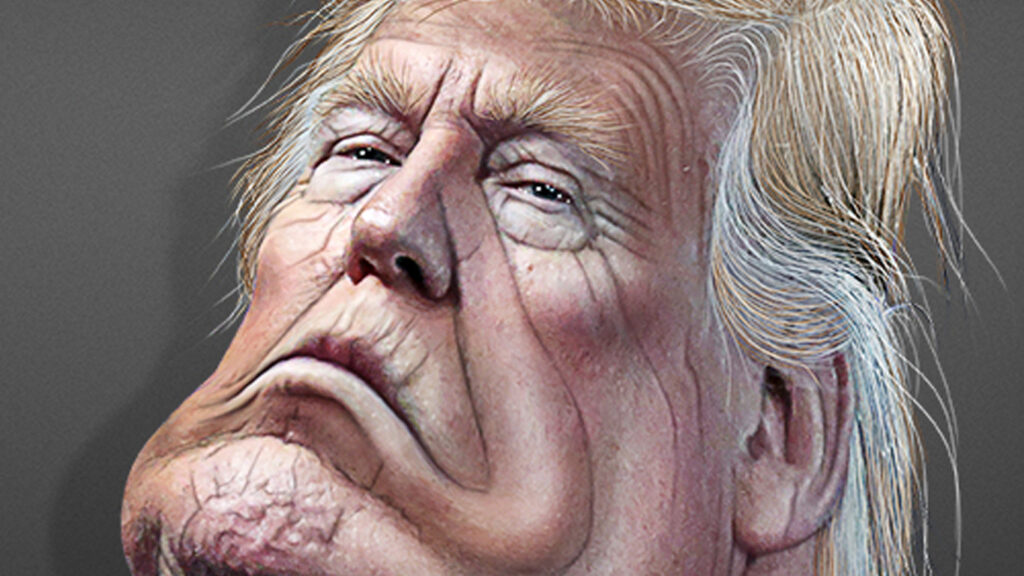by John Young
A recent poll finds only two of 10 Republicans think Donald Trump should be charged with the crimes for which he was indicted in Florida.
It’s all political, they say, all Joe Biden’s doing.
They don’t dare say that a grand jury authorized it, and 31 criminal charges, as with his criminal indictment in Manhattan.
The jurors saw the evidence and read the law.
In explaining this, special counsel Jack Smith had only one request of Americans: Read the indictment. I did that. It didn’t take long.
The document complements — but does not complete — the lifetime portrait of a figure who has blown through every stop sign.
More is to come in Georgia over Trump’s effort to bully election officials and construct a lie that he won.
And the morning after Jack Smith shared the charges in the document case in Florida, he was back compiling evidence of similar acts by Trump and his coterie of crooks to subvert voters’ will and throw the Constitution against the wall like so much condiment.
Should those indictments come, let’s predict right here that eight of 10 Republicans will say, “Pshaw.”
Since truth has never been Trump’s defense, don’t expect any of them to read the indictment. So I thought I’d provide the highlights in the Mar-a-Lago case. Drum roll, please:
No. 10 most incriminating thing in Trump’s indictment: While boxes and boxes containing highly secret documents languished on a stage and elsewhere including a bathroom, Trump held more than 150 social events attended by tens of thousands of guests.
No. 9: Documents were kept in a storage room from which people could have access from the Mar-a-Lago pool patio. The room was near the liquor supply closet, lock shop and linen room. The indictment says the door to the pool area was left open routinely.
No. 8: Trump says he had the authority to hold onto these documents even after the Justice Department ordered them back – and lied through his attorney that he had done just that.
To have such access as a private citizen, he needed a security clearance, which President Biden forbade, for good reason.
(One good reason: Trump’s pal Roger Stone had contacts with Wikileaks founder Julian Assange, purportedly regarding Russian-hacked Democratic National Committee emails. What else might Stone have shared?)
No. 7: Many of the documents in question came from the top-secret presidential briefings Trump received as president. Several biographers have pointed out that often Trump petulantly refused to digest these reports. Who knows? If he had done his homework then, Trump might not be facing jail time now.
No. 6: How secret were these documents? Some contained the “SAP” (special access programs) designation, meaning even a person with security clearance couldn’t see them unless in a designated department, with groups kept to an “absolute minimum.”
No. 5: Information about nuclear capabilities – ours and those of foreign nations – were sprinkled throughout the documents.
No. 4: Trump did not deny it when CNN’s Caitlyn Collins asked if he let people see classified documents. The indictment employs recordings to assert he did it – entertaining visitors with a glimpse at a map revealing a military plan of attack.
No 3: When asked if all had been returned, Trump lied: the FBI found 102 classified documents. This is the crime of obstruction Robert Mueller asserted Trump might have committed in the probe into Russian collusion.
No. 2: Trump suggested to his attorney that he take certain boxes away from Mar-a-Lago. When rebuffed, he suggested that the attorney be selective and remove certain items, “you know, pluck it out.”
No. 1: Counter to the narrative that this was all an innocent mistake and — hey, no big deal — the indictment quotes Trump himself when as commander in chief:
“I have a unique Constitutional authority to protect the nation’s classified information and controlling access to it.
“Such access is particularly inappropriate when former officials have transitioned into highly partisan positions” and could use them to highly partisan ends.
Folks, anyone who reads this indictment can come to only one conclusion, or in the case of that grand jury, 31 of them.
‘Longtime newspaperman John Young lives in Colorado. Email: jyoungcolumn@gmail.com.

